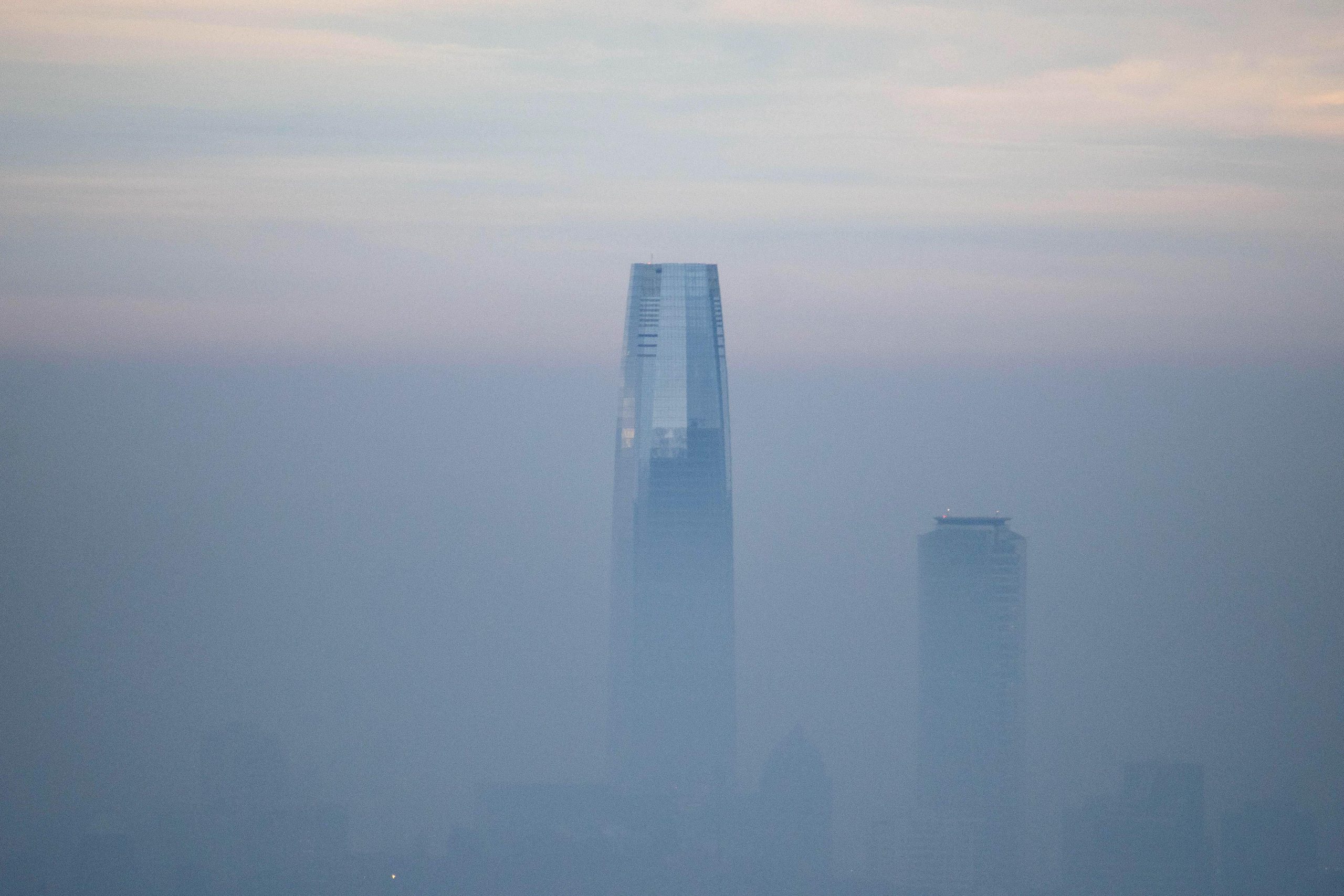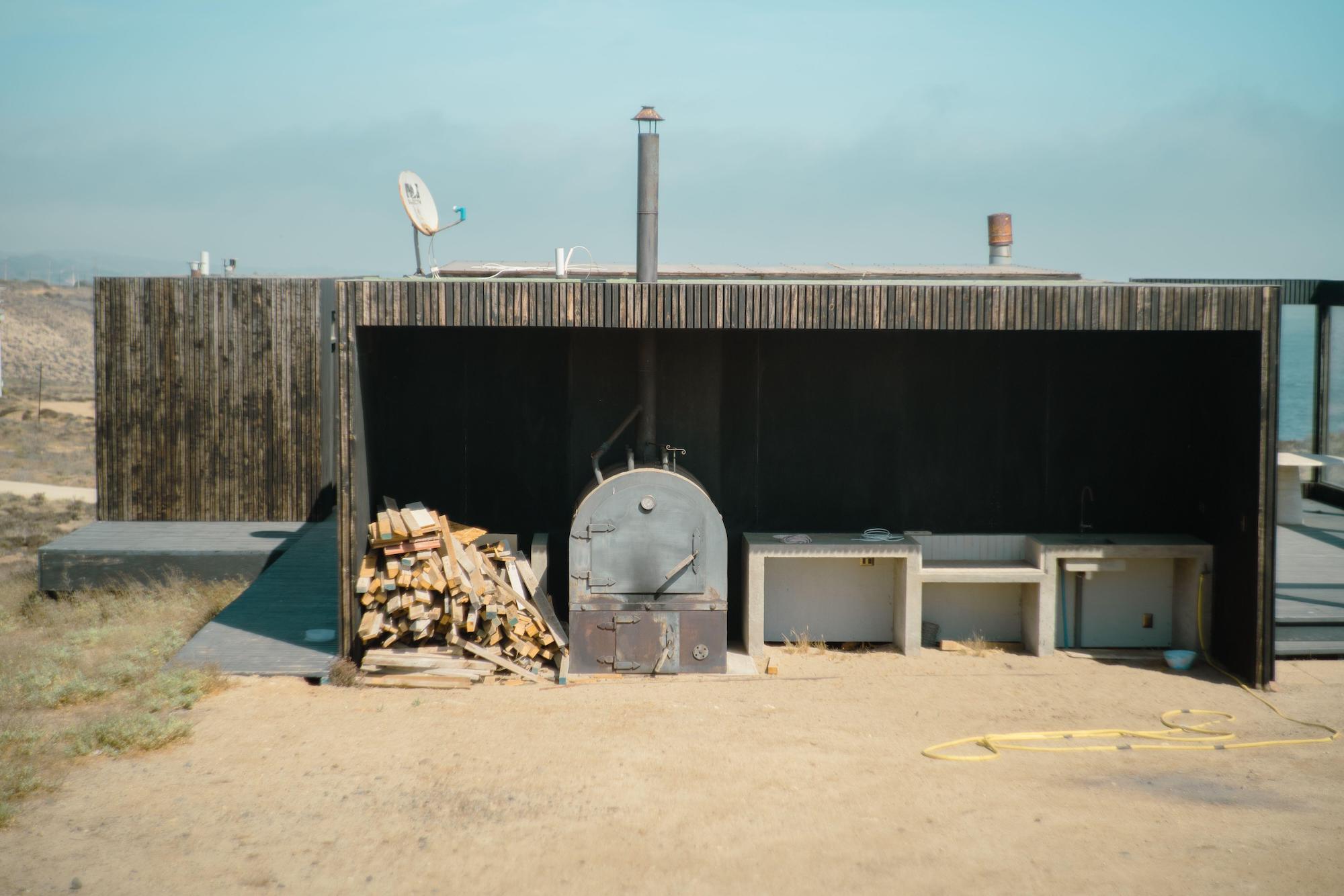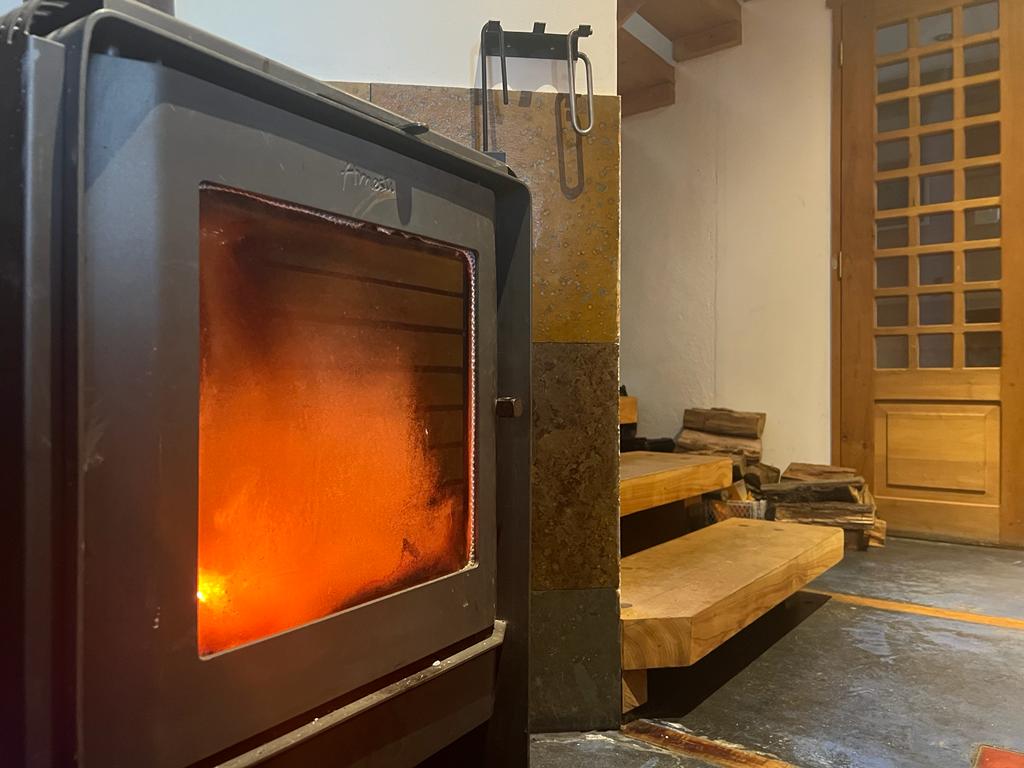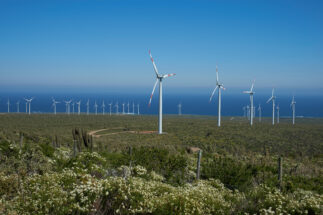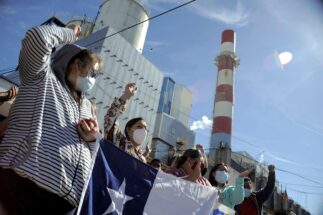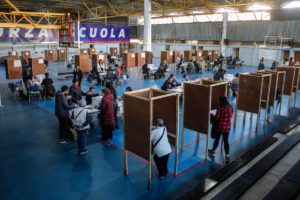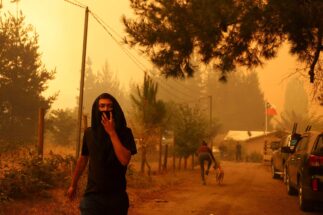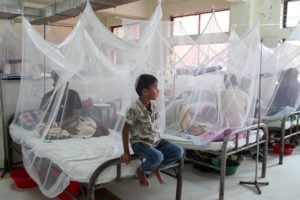Every winter for as long as she can remember, Claudia Hernández has seen the city of Puerto Montt, in southern Chile, covered in a thick layer of smoke. When she was a child, her parents would light the wood-burning stove that heated their home every day. There was not enough wood for them to keep burning all night, and they had to go to bed with several layers of bedding to keep warm.
Today, Claudia, now 56, has her own house and wood stove. Unlike her parents, however, she has often smelled smoke on her children’s uniforms when they return from school, and on her own clothes every time she comes home from work. Although she uses dry firewood, she says that not everyone has that luxury, with some having to resort to wet firewood – which is cheaper, but results in incomplete combustion and is more polluting.
“We have used firewood all our lives. For us, wood heating is much richer – you feel the heat, and more of the thermal sensation,” she says.
Claudia’s story is not the exception, but more often a rule: firewood is the most-used energy source in Chilean homes. According to data from the country’s Ministry of Energy, 72% of homes between the regions of O’Higgins in the centre of Chile and Aysén in the south use firewood for heating and cooking, and it is the most used fuel in the residential sector. According to the ministry, annual consumption is estimated to be around 9 million tonnes, reportedly enough to fill Chile’s national stadium in Santiago 18 times.
However, as the country looks to speed up its energy transition, shifting its energy mix away from fossil fuels to renewable sources, questions have arisen over whether Chilean households will also be able to make the switch to fuel sources that are less harmful to their health and the environment.
“A just transition must focus on those who find it most difficult to make the transition on their own – these are generally lower-income households, but they are not the only ones,” says Adolfo Uribe, a Chilean environmental engineer and economist.
As temperatures dropped heading into this year’s winter, the Santiago metropolitan region had already experienced nine days of environmental alerts by the end of May, due to poor air conditions caused by inadequate ventilation. The use of wood heaters is formally prohibited in the capital, although they are still widely used in the residential sector.
These incidents are becoming increasingly frequent in the country. In recent years, on approximately 96% of winter days at least one city in Chile has raised an alert for poor air quality. These numbers are not merely statistics, as poor air quality translates into people getting sick – and even dying.
Impact on health
“People grew up with the house being smoky and the smell of wood, and all of that means they are exposed to pollutants,” says Nicolás Huneeus, a researcher at the Center for Climate Science and Resilience (CR2) in Santiago. “But they were never told that this had an impact on their health, so it’s a little hard to start hearing it now.”
Indiscriminate use of firewood appears to be one of the main factors in the deterioration of Chileans’ health: at the national level, the Ministry of the Environment determined that firewood is the country’s main source of fine particulate matter, or PM2.5, accounting for 86.7%.
These particles penetrate deeply into the lungs and respiratory system, causing cardiovascular and respiratory diseases. According to a study published in March by the Lancet Countdown South America, Chile is the country with the highest number of deaths attributable to air pollution in South America.
Manuel Oyarzún, a physician and coordinator of the Environmental Pollution Commission of the Chilean Society of Respiratory Diseases, says that increases of 10 micrograms per cubic metre (µg/m3) of PM2.5 are associated with an increased risk of cardiovascular disease, stroke and mortality from cardiovascular conditions.
The World Health Organization’s (WHO) suggested recommendation for annual exposure to PM2.5 air pollutants should be no more than 10 µg/m3. However, Chile’s national annual exposure standard allows for twice as much. It is estimated that 4,590 deaths in Chile could be avoided annually if the WHO recommendation were complied with.
“The population has the right to know the environmental risks which it is exposed to, and, on the other hand, our country must have environmental pollution mitigation plans that recognise local realities,” says Oyarzún.
Solid biofuels law
There are technical, socio-cultural and economic barriers, says Huneeus: “Of course people don’t just use firewood because they have always used firewood – they use it because it is much cheaper.”
According to Huneeus, one of the main challenges is the large and informal firewood market, which has not allowed the demand for a quality product to increase. After years of insistence, the Law of Solid Biofuels was approved at the end of 2022, with the intention of regulating the quality of firewood, pellets and other fuels derived from wood.
“It is a law that favours everyone, [including] producers and end consumers, because we will be buying a quality and more efficient product,” says Claudia Lopetegui, regional ministerial secretary of energy for the southern region of Los Ríos.
The use of dry firewood with 25% humidity produces nine times less emissions of particulate matter compared to that with 35% humidity. In addition, dry firewood delivers between 12% to 14% more heat than wet firewood.
However, this legal step forward also entails many challenges that will require short- and medium-term solutions. The task for firewood producers – of inspection and certification – will not be an easy one.
In the city of Valdivia, in southern Chile, for example, dry firewood currently makes up only 6% of all available supplies, but the law requires this to be increased to at least 80% within two years.
According to figures from the Ministry of Agriculture, firewood production is carried out by some 18,000 forestry and livestock farms, so the certification process would appear to be a long-term task to ensure the quality of the production processes.
Lopetegui says that there is still time, and progress is being made. The law would only begin operating when the regulations are ready, which she estimates would be around the end of 2024. In other words, it would be published in 2025 and, one year after the regulation is published – that is, in 2026 – the law could begin to be applied.
“By making it more difficult to use poor quality firewood, the regulation should increase the demand for clean fuels… thus generating incentives for producers to offer more clean fuels,” claims Uribe.
The opportunities
Although regulation of quality firewood is necessary, analysis by CR2 showed the greatest reduction in PM2.5 pollution is gained in a scenario in which policies are applied at the regional level to replace wood-burning heaters with pellets, a biomass product, as well as improve the thermal insulation of homes.
Since 2009, atmospheric decontamination plans (PDAs in Spanish) have been implemented in Chile, which have allowed some families to receive a subsidy to replace their wood stove with a less polluting pellet stove. However, stock shortages of this fuel, along with the increase in its price in the last few years, have left many unwilling to make the switch.
“We are working with the woodcutters and the pellet makers, but an action plan from the ministry [of energy] is also required to ensure that this situation does not happen again, this year and in future years,” says Lopetegui. She adds that an agreement has already been signed between the government and the producers so that they do not export pellets, ensuring that the national supply is maintained.
For Uribe, the stove replacement plan will still be a good option in the domestic energy transition, as long as safeguards for its availability are established. He says evidence indicates that using pellets is more expensive than firewood – but if pellets’ price is compared with that of certified firewood, the difference is considerably reduced.
For a just household energy transition, renewable energy is another opportunity to be considered, Uribe adds. Despite some challenges, Chile has developed an increasingly diverse and clean energy mix.
“One way to take advantage of the expansion of renewable energies is to consider their benefits,” says Luis Gonzales, economic coordinator of climate change, energy and environment at the Latin American Center for Economic and Social Policies. “For example, in the building of social housing and the private sector tenders for their construction, introducing [requirements to build] units that meet energy efficiency criteria, and considering the possibility of having solar consumption in the same projects.”
According to Gonzales, this measure would alleviate the demand for housing, reduce the energy cost for households that will inhabit these homes, and contribute to distributed generation, a technological and regulatory challenge that economies should consider to achieve greater productivity benefits.
Gonzales and Uribe agree that timely regulation and technological adoption play an important role in the household energy transition. Household electrification, they say, is also key to addressing the climate crisis.
“The long-term energy strategy for Chile, according to its climate commitments, assigns a large role to the electrification of heating, but this is very difficult in the face of high electricity costs,” adds Uribe.
The long-term energy strategy for Chile assigns a large role to the electrification of heating, but this is very difficult in the face of high electricity costsAdolfo Uribe, environmental engineer and economist
In this landscape, the green hydrogen and lithium projects being promoted in the country could contribute. But with policies around their growth continuing to be focused on exports, the opportunity for local development of storage technologies to harness this energy – which could potentially benefit users along the entire energy consumption chain, including households – could be lost.
Public policies to ensure a fair and well distributed energy transition remain a work in progress in Chile. The replacement of wood stoves and increased uptake of renewable energy could present opportunities to promote a cleaner and more economical energy transition for households, one that could support climate action and improve quality of life.
This article was originally produced with the support of Climate Tracker Latin America. This translated and lightly edited version appears here with permission.
